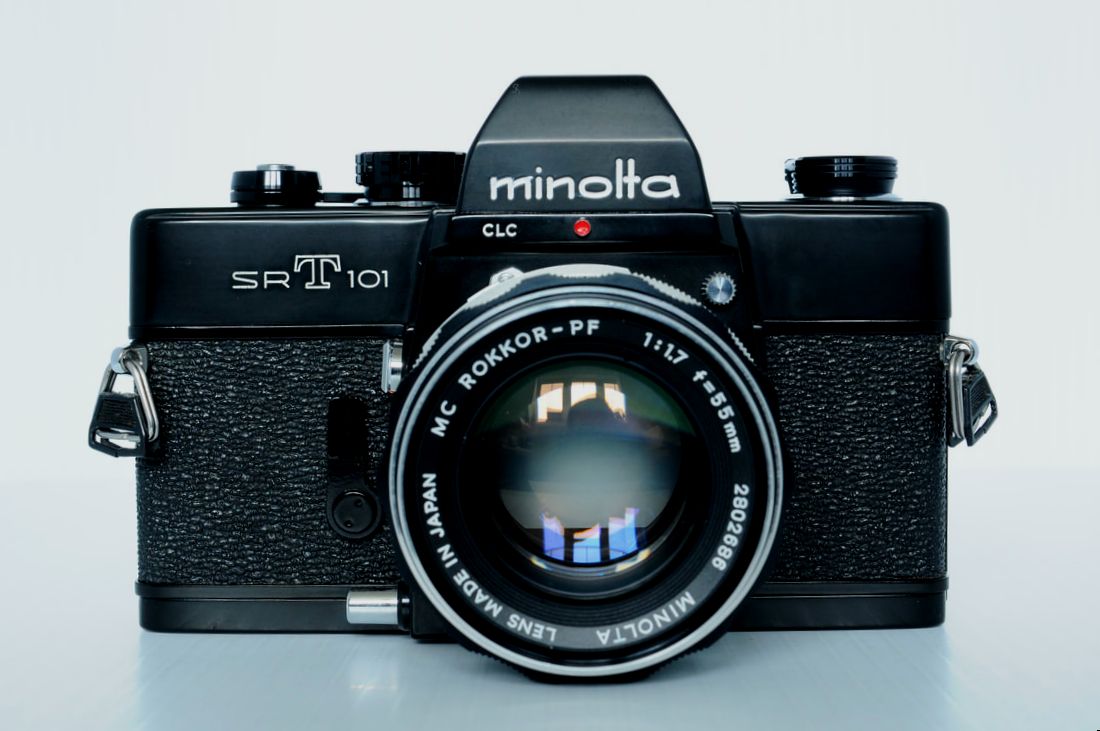|
Updated Oct. 19, 2021 The mid-1960s were heady days in SLRland. From 1964-66 all of the Big 4 Japanese manufacturers brought out new top-of-the-line enthusiast models: the Pentax Spotmatic (1964); the Nikkormat FT (1965); Canon's Pellix (1965) and FTQL (1966); and the object of our attention in this article...Minolta's SRT (1966). The feature all of these cameras had in common was: built-in through-the-lens (TTL) metering. We take it for granted now, but five decades ago this was revolutionary. Of the five models, the Pentax and Canons used stop-down metering (meaning that the photographer had to manually close (stop-down) the aperture on the lens to get an accurate reading and then focus at maximum aperture). The Nikkormat offered full-aperture metering (the lens remained at maximum aperture for the brightest view and ease of focusing while the meter reading was taken), but required the user to manually index the aperture ring every time that they changed lenses. Then came the SRT-101. Full-aperture metering and the aperture automatically indexed whenever you mounted a lens. No muss, no fuss. And all it took was:
2 Comments
|
C.J. OdenbachSuffers from a quarter-century and counting film and manual focus SLR addiction. Has recently expanded into 1980's AF point and shoots, and (gack!) '90s SLRs. He even mixes in some digital. Definitely a sick man. Categories
All
Archives
June 2024
|

 RSS Feed
RSS Feed